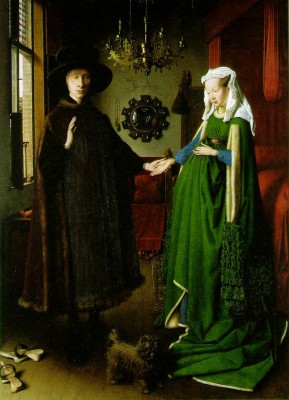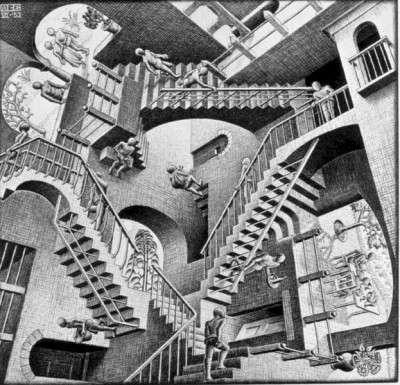What makes a piece of art successful? Most would argue that it’s a combination of elements all working together in concert. One of the most basic of these elements is the concept and execution of perspective.
Perspective in a work of art, whether it is a painting or illustration, is paramount for its ability to provide strong visual impact. Proper perspective gives a sense of depth and allows the viewer to “step inside” and become part of the picture.
In a nutshell, perspective is the ability to create optical depth and spatial extension on a flat surface, such as a canvas. It gives the viewer the illusion that he or she is looking at a three-dimensional object. The discovery of perspective techniques in Italy in the 15th century was a breakthrough for art, liberating and expanding the range of images previously limited to what amounted to mere surface decoration.
The Flemish artist, Jan van Eyck, was a technical master when it came to perspective and detail. His painting The Arnolfini Marriage from 1434 (shown above) represents one of the earliest uses of these new techniques. This systematic approach allowed for a richness of depiction that up until that point was not possible without overwhelming the canvas.
A more modern master of perspective, M.C. Escher, was a Dutch illustrator born in the late 1800s, whose innovations with classic mathematics and symmetry allowed him to create works which played on conventional perspective. His use of plane division resulted in compositions that are visually stunning and often intellectually challenging.
Well executed perspective, whether in a realistic or surreal setting, broadens perceptual possibilities for the viewer, giving them the illusion that beyond an artwork contained in a frame exists a complete world ready to enter and experience.
Brian Sylvester is a guest blogger on WallSpin, and an artist on Zatista.








Great post! Good examples. Your posts are informative and stimulating.
I agree with the ideas on perspective but then there is the more shallow perspective (‘depth of field’ as my photographer son always calls it) of traditional Chineese or Japanese art which depends on other elements for it’s impact. Arguably, Brian’s mandalas have this ‘shallow depth of field’! and don’t rely on deep perspective to give them impact. Just a thought!